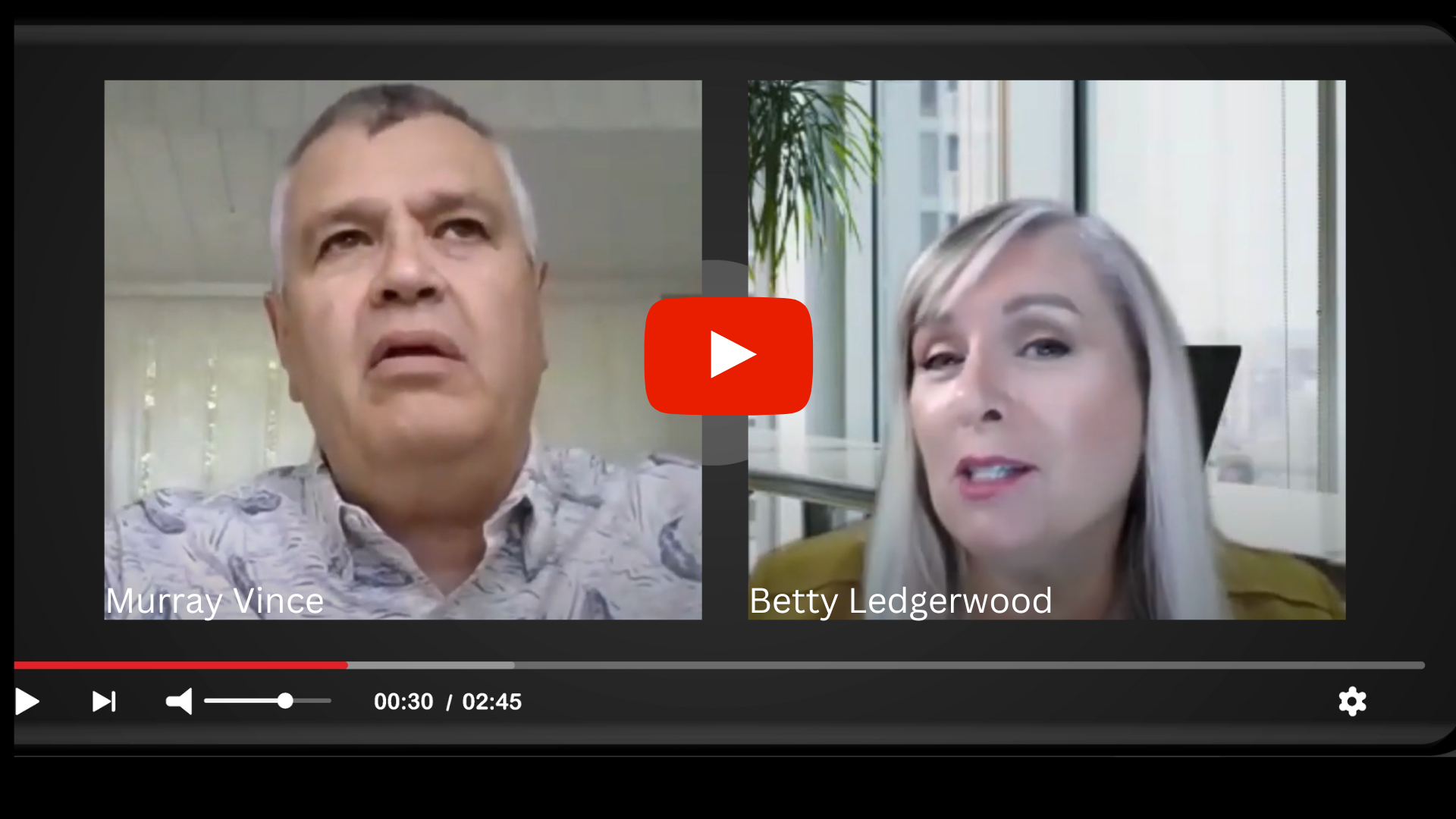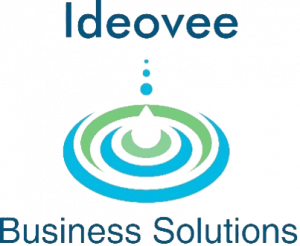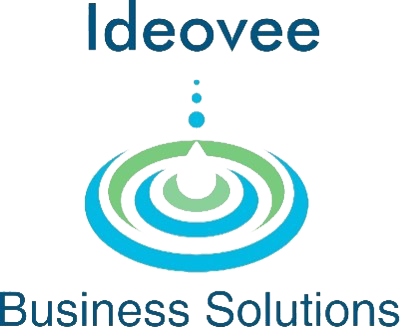
Betty Ledgerwood and Murray Vince discuss Account Based Marketing (ABM). Betty and Murray are actively involved in delivering marketing and ABM services for their clients. As the principals behind BetterProspecting.biz (a 2021 award-winning ABM services business); Betty and Murray have decades of sales, marketing and business development experience. They share their insight and coaching through videos, podcasts, online courses, and consulting services.
Why do they care about ABM? Because in their experience, ABM delivers results and for B2B businesses, if you’re not practicing ABM you will fall behind the competition that does follow ABM.
~~~~~~~~~~~~~~~~~~~~~~~~~~~~~~~~~~~~~~~~~~~~~~~~~~~~~~~~~~~~~~~~~~~~~~~~
Betty Ledgerwood is the principal of Light Switch Marketing and Murray Vince is the founder and vice president of Business Development for Ideovee Business Solutions. Together they provide the BetterProspecting.biz ABM services. Earlier this month, Betty interviewed Murray about ABM.
WHY ABM?
Betty: Let’s get started. Tell me when did you start with ABM and why?
Murray: In 2017 and there were a couple of companies I was working with where they used the ABM buzzword: a lot. But it seemed no one really could tangibly describe it or explain what ABM was. It coincided with my interest in doing a ‘skills upgrade’ professionally, kind of time to invest in myself and professional growth. I do that every year or two and look for something new that I can learn.
I found training on ABM with DemandBase and Engagio and I was hooked on the principles and process behind ABM. And as it turned out, DemandBase, ended up acquiring Engagio about a year later. Both companies had a very common approach to account-based marketing. They articulated a clear ABM process for complex sales, and we know for even an easy sale, it takes seven to 10 touch points to persuade a customer to make a purchase decision.
For complex sales, it’s easily 15-plus contacts. So there’s really a sustained effort required by the sales team and, a lot of sales reps and marketing teams have a hard time sustaining that over the required length of time. ABM gives us a roadmap for that, and I had been doing the process kind of ad hoc, but sometimes I drop one or I do the meta sequence.
By learning about the ABM process, it’s given me a very clear methodology that works and produces superior business results.
WHAT IS ABM?
Betty: So for our audience, then, perhaps you can tell us more about what ABM is.
Murray: ABM is a methodology. It’s a process and strategic course to follow for B2B sales. ABM is a strategic approach to developing the right customers and landing the customers that will matter most to the growth of the business.
Instead of treating everybody who walks through the door or who comes to your website as a customer, there’s really a finite number of customers that will really matter to business growth.
There’s the customer pyramid, how do you attract and create awareness with the top of the pyramid, the most valuable customers? And then scale programmatically to reach the middle and bottom of the pyramid?
There’s a measured growth strategy with continuous improvement to ABM. So you learn about what you’re doing measurably, consequently, you learn what’s effective and you can improve upon it.
Another essential ingredient is an alignment of the revenue functions as a unified team. So instead of silos of sales, marketing, operations, and finance: cobbling their pieces together ABM brings the functions together in a cohesive way.
It really brings the team together on commonly measured objectives and outcomes. There’s a focused, knowledgeable effort to secure the right customers: the ones that will matter most for business growth.
That reminds me of the saying that I love most at ABM is that it’s “fishing with a spear, not a net”.
Because ABM is very focused, and we know your prospective customers, we know them in depth, and we find out what the problem is that we solve for them and appeal to them on a, on a one-to-one level. The numbers game for outreach generates too much chaff and it’s a drain on customers who resent the spam and our revenue members who end up spending too much time chasing unproductive leads.
We generally call it B2B sales, but it’s really people-to-people. We’re selling to other people at other companies, and we tend to lose sight of that with the B2B tag.
WHAT ARE THE BENEFITS OF ABM?
Betty: ABM is a process for proving our value to prospective business customers in a very deliberate way. I love that there’s a strategy for ABM that will bring together all the important pieces and people within a company to focus on the same goals together.
That fishing with this spear and not a net expression says a lot about the focus ABM brings to a business: there’s an emphasis on effectiveness and efficiency.
So, the next question is, what do you think the benefits are of ABM for the small to medium business?
Murray: Well, there are some pretty compelling industry stats on the subject of ABM benefits.
I run a relatively small ABM services business, While I have my own personal experience, which is anecdotal, but when I look at what’s happening in the industry, and I look at some of the big players, like DemandBase for one, or Salesforce, or HubSpot, who are all adding aspects of ABM, across the industry. They have some impressive data on ABM successes and success rates.
Industry players like PMG say that 72% of companies reported greater ROI from ABM than any other kind of marketing.
Forrester research, ties with data that says organizations that align sales and marketing in an ABM process have an average of 32% revenue growth while companies that aren’t doing that have a 7% decline.
Competitively there’s data from Forrester about how ABM works. The ITSMA reports that 85% of marketers who use ABM have higher returns than any other marketing approach they use. That means half of them are reporting significantly higher ROI.
Sirius Decisions provides another kind of industry benchmark:”84% of marketers say that ABM offers significant benefits in keeping expanding client relationships. Nearly a third of marketers report more than a hundred percent greater engagement with C-suite targets, um, when working with ABM.
I like that ABM study but I dislike using that expression “target” in the context of customers. It feels pretty impersonal and … well just wrong. These are really prospective customers. These are people, not targets. I really want to get the industry away from that target type of perception and mentality. But I digress, on humanizing our sales process.
But there’s really broad industry information. Marketo says that ABM can reduce up to 50%, that’s an astonishing five zero percent, 50% of wasted sales time on unproductive leads.
Those are the kinds of improvements that a business can see when we adopt ABM.
WHO SHOULD USE ABM?
Betty: Who do you think should be using ABM?
Murray: I think there are probably applications in business to consumer, but, but that’s not the primary focus in today’s conversation.
It’s really business to business that wants to be competitive and accelerate growth. And when company leadership at the CEO level, CRO level, CMO level is frustrated by the team not working well together and not being a unified revenue team, that’s another critical opportunity to, to add leadership, to galvanize the team, bring people together and overall change the culture and unity of the business.
Betty: Understandable. ABM will work more effectively on sales growth and acceleration of the sales process. Frankly, being a marketer, I think that we’re always looking for ways to bring all the teams together to align with sales, to make sure that we’re all focused on the same objectives.
Murray: And that’s one of your core strengths and business skills, Betty, in terms of working with people. You put the business first objectively and your ego doesn’t get in the way. You have a focus on the right outcome objectively for the business.
I’ve seen many organizations where sales points their finger at marketing and marketing points their finger at someone else and ops is in the mix too sometimes. That intro-team infighting is non-productive. It signifies a team dysfunction the business leadership needs to identify, address and eradicate. ABM helps with that.
The infighting is not good for the business. It’s not good for the employees. It’s not good for the customers, and it’s a pretty sad reflection on leadership that they need to sort that out.
HOW CAN BUSINESSES START WITH ABM?
Betty: There’s a better way to do this. Exactly. So how can small or medium size B2B businesses implement or start to implement an account-based marketing program?
Murray: I hear that often. One of the first reference materials that I picked up on ABM was 185 pages. That’s a little daunting when you are just getting started. It seems like it’s going to be long-haul. As it turns out, it’s a great reference guide to put on your desk and set aside for reference when you need to go deep in a particular area.
Betty: But if you’re going to learn about ABM, that is a pretty serious time commitment. I think there’s a crawl, walk, run approach to it, right?
Murray: Yes, absolutely right. You can use your existing systems, existing salestech, martech: you can work with your existing team. Start with a framework for ABM. Adopt a framework.
We use a seven-step process that’s really easy to follow. Identify gaps and fill them. For some of the resources you don’t have or expertise you don’t have, ask for help: contract for those resources. Use your business network to fill in those gaps. The online resources available are expansive. Find one that works for your business and stick with it.
But the important part is to start. I love that expression about the two best times to plant a tree are 20 years ago and today. ABM is very similar.
Betty: Like the best time to start would’ve been about 10 years ago when ABM started and was nascent.
Or today. But the important thing is to get started. A lot of our clients are looking for a trial program for ABM. It doesn’t have to be one hundred or a thousand prospects we are after. We can start with a smaller-size pilot project with 10 or 20 prospective clients. Again, it’s not the numbers game for outreach: it’s the development of a high-quality, informed approach to a select few that will make a difference.
To summarize what you’re saying is that we want to start now and take a crawl, walk, run approach, but start implanting ABM today.
– END –
Watch the Video Podcast on our YouTube Channel: https://youtu.be/bls7rORBrBg
Get our Free Download: The 7-Step Framework For Creating Relationships with our Ideal Customers. Click to download “Guide to Driving Business Success with ABM”.
ABM Resources
https://www.lightswitchmarketing.com/better-prospecting
Follow us: https://www.linkedin.com/feed/


